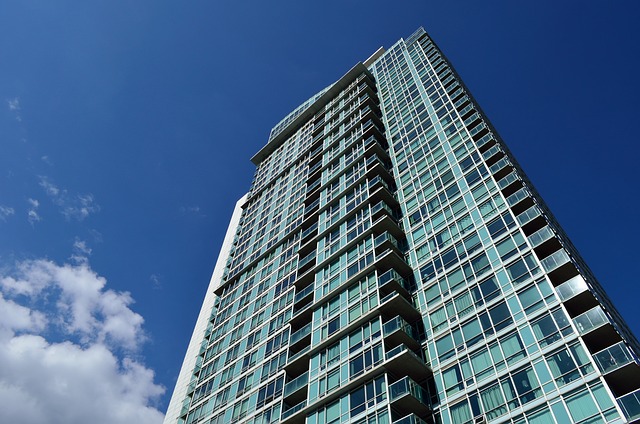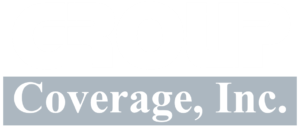Commercial Building & Apartment Insurance
Landlords have numerous concerns to contend with regarding renting to tenants such as their ability to pay the rent, what type of operation will be leased, does it comply with all the laws, and will it present any conflicts amongst the other tenants. They are also faced with numerous regulatory building codes and requirements that in some cases hamper the property’s ability to earn a profit. And of course, how to protect the investment in the event of a claim.
Covering the exposures of an apartment house is not much different than covering a warehouse or mixed-use property. The main differences in coverage would generally be contingent on the type of tenants occupying the premises. The inherent exposures of a steel mill are quite different than a chiropractor’s office. Hence, when evaluating the necessary to perils to protect against, its important to evaluate what could happen.

Commercial Property
A policy condition called the coinsurance clause basically states if the coverage does not meet the required percentage of the replacement cost, then the insurer may apply the coinsurance penalty in the event of a partial loss. For example, if there is an 80% coinsurance clause, and the replacement cost of the property is $ 1,000k but the amount of coverage provided is only $ 400k, then the coinsurance penalty is 50%. Thus, any partial losses, such as a $ 100k claim would be subject to a recoverable amount of 50% as the insured is deemed to have been coinsured by not covering the property to at least 80% of the replacement cost. Hence 80% of $ 1 million is $ 800k and if the amount of coverage was only half that amount, then the coinsurance percentage would be 50%. If the amount of coverage was $ 600k, then the percentage of coinsurance would be 75%.
The first rule is to secure the proper amount and to avoid the dreaded coinsurance penalty. It is true that inflation increases the cost of construction over time, therefore it is recommended that an appraisal be conducted on a periodic basis. A way to avoid or prevent inflation from eroding the coverage is to add an inflation guard that will automatically increase the coverage upon the renewal usually be a fixed percentage.
Ordinarily landlords don’t store much of their own business personal property or contents on the premises they rent out to others. If so, they would be themselves occupants by warehousing their own goods. However, certain property can be used to maintain and repair the area such as lawn mowers, ladders, and other types of tools can often be categorized as part of the building form if not listed as a separate line of coverage under business personal property. Equipment used to heat, cool, and protect, such as fixed mounted air conditioners, alarms, video surveillance and intercom systems are also categorized on this same form unless there is a separate sub-limit or endorsement available.
Business personal property or contents coverage usually provides protection for the furniture and decorations in the common areas, or for items used to furnish apartments including televisions and telephones. The cost to replace bedding, towels, pool supplies, and food stock should also be considered.

Loss of rental income on many policies, such as the BOP cover on an Actual Sustained Loss basis for a period of one year. The essentially means that coverage will be afforded to replace the loss of rents for a period of one year or less. However most package policies require an amount of coverage along with a fixed period to be listed. The latter is often subject to a coinsurance requirement. An example of loss of rents that is scheduled would be to replace a $ 100,000 per month for six months. If there is a 50% coinsurance requirement, at least $ 50,000 of coverage would need to be listed to prevent the coinsurance penalty from being imposed.

Appurtenant and other structures are separate buildings or structures located on the property but not connected to the described premises. Tool sheds, garages, swimming pools, cabanas, gazebos, and even free-standing awnings & signs can be considered as an appurtenant or other structures (awning & signs can sometimes be scheduled or endorsed separately and usually subject to its own terms and conditions). It is important to list these structures with the proper replacement costs as more often than not, there is no coverage afforded under the building form.
Monies and Securities & Commercial Crime and/or Employee Dishonesty coverage is especially important if someone either employed or contracted is acting as a fiduciary by collecting rents or by handling the funds of the building owner. Many times, outside property managers are contracted to oversee the maintenance and the collection of rents. Many property managers carry their own commercial crime and E & O insurance. Sometimes the property manager may carry a fidelity bond. Therefore, it is recommended to thoroughly investigate their lines of coverage and if possible, request to be listed as an additional insured and/or loss payee with respect to their insurance.

Commercial Liability & Umbrella
If the loss occurs on the premises, such as a trip or fall, it is deemed as a premises liability loss. Most losses are sudden and accidental, however repeated exposure such as caused by a pollutant or hazardous material can also be of a major concern. Therefore, it is important to evaluate all of the inherent exposures of the building premises. The following partial list of concerns can be used to address some of these ongoing hazards and repeated exposures:
- What type of heating system is used? Oil, coal, gas, propane, etc. Is there a service contract in force?
- Was asbestos used and was it properly abated? Is there still an exposure?
- Is there radon in the soil? What about any other known contaminants?
- Has there been a problem with Legionnaires Disease or E. Coli?
- What facilities are maintained by management – pool, spa, fitness, playgrounds, recreation center, etc.?
- Is food or beverages served on premises? Who provides the food and beverages? Is alcohol served?
- How is parking provided? Is self-serve or valet? Is there a door person or security? A bell check or housekeepers?
Products and completed operations provide coverage for what is supplied, maintained, and completed by the insured under the terms and conditions of the policy. This may include coverage for faulty equipment installed such as a light fixture falling from the ceiling due to a faulty installation of the landlord or maintenance crew. An example of products liability insurance can be providing the coverage if someone becomes ill from ingesting a beverage that was provided by the named insured at an open house or welcome or holiday party.
Operations liability affords coverage during the operations of the business. An example can be if a parking attendant employed by the insured hit a third-party pedestrian while driving a guest’s car.
Personal and Advertising Injury coverage provides protections for injury to the persona of another person or entity within the terms and conditions of the policy. Examples of these can include, but are not limited to:
- Libel and slander
- Defamation of character
- False arrest
- Copyright and trademark infringement
- Harassment, discrimination, mental anguish, etc.
Workers Compensation and Statutory Disability
Each state has its own requirements for workers’ compensation insurance and employer’s liability if employees are hired and under the control and direction of the landlord. This rule may even apply to independent contractors hired by the management of the building if it is determined there is vicarious liability due to the nature of worker delegated and/or performed by the contractors. It is important to check with the department of labor in the various states as well as the Office of Consumer Affairs in the local community to check if independent contractors are required to carry their own coverage and to what extent. If so, it may be important to list the landlord or building owner as an additional insured with respect to any liability claims. Contracts between the parties protecting the rights of each can also prevent confusion in the event of a claim. Language that addresses rights of subrogation, disclaimers of liabilities, hold harmless clauses, etc. often make up the language that can clearly identify which insurance responds in the event of a claim and how the process of a claim should take place. Hence, it is highly recommended that a competent attorney review and/or draft these contracts before executive by the parties.
Statutory Disability Insurance is only mandated in a handful of states. Often called DBL policies, coverage is afforded to those employees injured by sickness or illness that is not employment related. The remuneration is determined by the level of pay if the employee was actively at work. The duration of payment generally lasts no longer than six months and often has a deductible of one week for hospitalizations. Please check the policy for the terms and conditions and whether your state requires workers’ compensation and/or statutory liability.
* The above article is intended as a tool to assist in the evaluation of coverage and offer a method to determine if certain exposures may have been overlooked and should be filled. If is not intended to offer advise which coverage to offer or suggest any levels of coverage. Please read the terms and conditions as well as the exclusions and the coverage forms before making your own determinations. It is recommended that an independent appraiser be hired to assess the value of the property, qualified legal counsel hired to review the contracts, work orders, and lease agreements, and that a competent agent or broker be used to sought our carriers that can package the necessary coverage at affordable prices while maintaining their financial stability.

